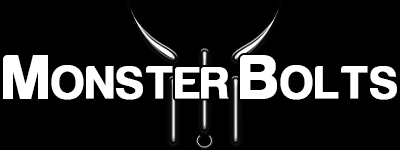Fastener Terms Explained: The Complete Glossary for Screws, Bolts, and Nuts
Fastener Glossary: Screws, Bolts, Threads & More
Confused by terms like "12.9 Alloy" or “Tap Bolt”? You’re not alone. At Monster Bolts, we created this fastener glossary to help professionals and DIYers alike quickly understand key terminology used in the world of bolts, screws, washers, nuts, and more. Whether you’re browsing our product pages or tackling a new build, this guide is your go-to reference.
Quick Navigation
- Screw Types
- Screw Drive Types
- Screw Head Styles
- Nut Types
- Washer Types
- Materials
- Finishes & Coatings
- Threading Terms
- Strength & Testing
Screw Types
“A” Sheet Metal Screws: Sharp-pointed sheet metal screws with deeper threads for better grip than Type AB.
“AB” Sheet Metal Screws: Combine features of Type A and B. Pointed ends with more refined threading.
Cap Screw: Another term for hex head bolts, typically with a washer face under the head.
Tap Bolt: Fully threaded bolt, used in applications requiring thread engagement along its entire length.
Set Screw: Headless screw with a drive recessed into the end, often used to hold pulleys or gears onto shafts.
Screw Drive Types
There are many types of screw drives used across different applications. The most common ones include:
- Flat / Slotted: One of the oldest drive types, consisting of a single horizontal slot. Prone to cam-out and best for manual driving.
- Phillips: A cross-shaped drive that centers the screwdriver, making it ideal for powered drivers but susceptible to cam-out under high torque.
- Pozidriv: Similar to Phillips but with additional lines between the arms of the cross. Provides better torque and reduces slippage.
- Square (Robertson): A square recess drive offering excellent torque transfer and reduced cam-out. Common in woodworking.
- Hex (Allen): A six-sided recess used widely for machine screws and socket head fasteners. Compatible with hex keys or Allen wrenches.
- Torx (Star): A six-point star-shaped drive that offers high torque transmission with minimal cam-out. Frequently used in electronics and automotive applications.

Screw Head Styles
Head styles define how a screw sits on or in the surface material and what tools can be used to drive it. Here are some of the most common types:
- Flat Head: Countersunk with a flat top, used when the screw needs to sit flush with the surface.
- Oval Head: Similar to flat heads but with a slightly domed top, providing a decorative finish.
- Pan Head: Rounded head with short vertical sides, common in general-purpose fasteners.
- Truss Head: Extra-wide and low-profile, used to distribute load over a larger area.
- Button Head: Rounded head with a lower profile than a pan head, commonly used with Allen drives.
- Socket Head: Cylindrical head with a recessed hex drive. Used in applications where space is tight.
Nut Types
Acorn Nut: Domed nut used to cover exposed bolt threads, adding safety and visual appeal.
Jam Nut: A thinner nut used to "jam" against another nut to prevent loosening.
Castle Nut: Slotted nut used with a cotter pin to prevent loosening. Ideal for mechanical locking systems.
Nylon Insert Locknut (Nylock): Uses a nylon ring to resist loosening under vibration.
Washer Types
Washers distribute the load of the fastener and help prevent damage to the surface material. Here are the most common types:
- Flat Washer: The standard washer used to distribute load and prevent pull-through.
- Split Lock Washer: Also known as a spring lock washer, it exerts tension to help prevent loosening from vibration.
- Fender Washer: A larger outer diameter than a standard flat washer, used to spread load across wider surfaces.
- Tooth Lock Washer: Features internal or external teeth to bite into the surface and prevent loosening.
- Belleville (Conical) Washer: Cup-shaped washers that apply consistent spring force and can be stacked for custom resistance levels.
For more in-depth fastener info, sizing guides, PDF rulers, strength specs, and hex key charts, visit our Fastener Information Page.
You can also learn how to measure fastener length properly here — complete with a printable guide!
Still have questions? Contact Monster Bolts — we’re here to help with any fastener-related questions!
